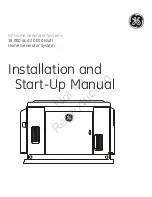
6
C.
Fuse
Fuses for DC Input have been fitted to the rear panel. So as to be easily accessible in
order to facilitate checking & replacing if required. Depending on the installation this
maybe possible without removing the inverter.
3. HOW TO USE INVERTER
3.1 Load consideration
When an appliance with a motor starts, it requires a momentary surge of power. This
surge of power is the “starting load” or “peak load”. Once started, the appliance
requires less power to continue to operate. This is known as the “continuous load”. It
is important to know the starting loads and the continuous loads of the appliances that
are to be powered by the inverter.
Appliance power is rated in watts. This information is usually stamped or printed on
most appliances and equipment. In some cases, a tool will be rated in amperes. To
convert from amps to watts, multiply:
Amps x AC voltage = Watts (Eg: 2.0 A x 230 V = 460 Watts)
This formula yields an approximation of the continuous wattage load of that
appliance.
The startup load of an appliance is a major factor of whether this inverter can power
it.
Startup load is momentary. With many appliances, it is approximately twice the
continuous load, but some appliance startup loads can be as high as eight times the
continuous load.
If you are unsure of your equipments Power requirements an ‘Energy use’ meter may
be used to measure the
starting peak
&
continuous wattage
.
In order to lesson the possibility of damaging the inverter or the equipment.
This inverter will automatically shut down in the event of an output overload,
When this occurs a Red LED indicator will turn on and the Buzzer signals a fault.


































